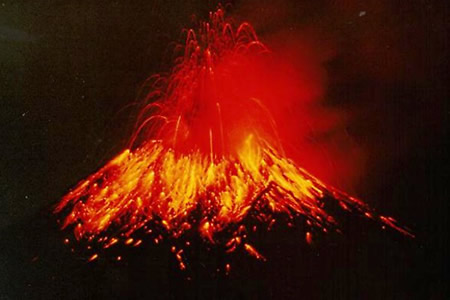
A popular way of categorising magmatic volcanoes is by their rate of eruption, with those that erupt regularly called active, those that have erupted in historical times but are now quiet are called dormant, and those that have not erupted in historical times are called extinct. But, these popular categories, extinct especially are practically meaningless to scientists. They use categories which consign to a particular volcano's formative and eruptive processes and resulting shapes, which was explained above.
There is no real disagreement among volcanologists on how to describe an active volcano. The lifetime of a volcano can change from months to several million years, making such a distinction sometimes meaningless when compared to the lifetime of humans or even civilizations. For example, many of the Earth's volcanoes have erupted dozens of times in the past but are not currently showing signs of eruption. Given the long lifespan of such volcanoes, they are very active. By human lifespans, however, they are not.
Scientists usually consider a volcano to be active if it is currently erupting or showing signs of unrest, such as unusual earthquake activity or significant new gas emissions. Many scientists also consider a volcano active if it has erupted in historic time. It is important to note that the span of recorded history differs from region to region; in the Meditteranean, recorded history reaches back more than 3,000 years but in the Pacific Northwest of the United States, it reaches back less than 300 years, and in Hawaiii, little more than 200 years. The Smithsonian Global Volcanism Program's definition of 'active' is having erupted within the last 10,000 years.
Picture URL:http://images.google.ie/imgres?imgurl=http://geology.com/news/images/tungurahua-volcano.jpg&imgrefurl=http://geology.com/news/labels/Volcanoes.html&h=300&w=450&sz=32&hl=en&start=1&usg=__yRHuUT6FEv-ImFK0un8-rXK-p9A=&tbnid=fJSwvSO6kG1-_M:&tbnh=85&tbnw=127&prev=/images%3Fq%3Dvolcano%26gbv%3D2%26hl%3Den
The picture above is an example of an erupting volcano.
This video is an example of a volcanic eruption. Follow the link to watch it, the video is provided by googlevideo.com
Video URL:http://video.google.com/videoplay?docid=1549454720556565216&hl=en
No comments:
Post a Comment